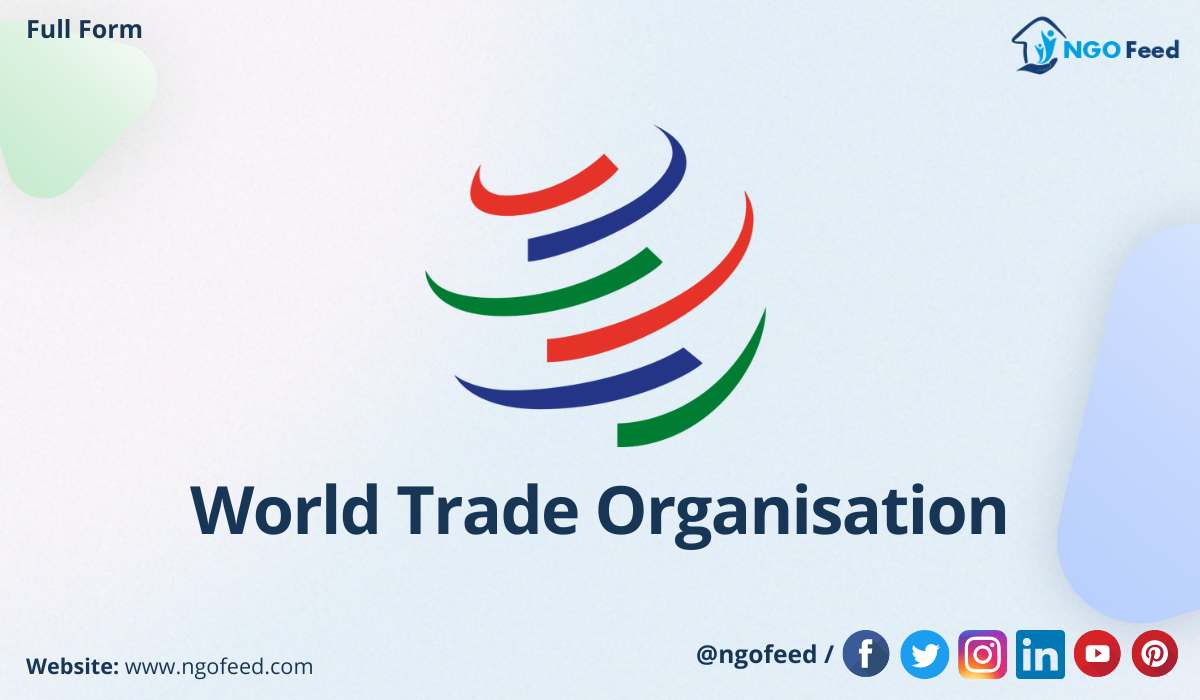WTO Full Form: WTO stands for World Trade Organisation and is an international organization established on 1 January 1995 as the successor organization to GATT (General Agreement on Trade and Tariffs). GATT was established in 1948 as a global (international) trade organization with 23 countries fulfilling all multilateral trade agreements by giving fair opportunities to all countries in international exchange for trade prospects. The WTO needs to create a rules-based trading government in which countries cannot impose unreasonable restrictions on trade.
The World Commerce Organisation (WTO) is the world’s largest international economic organisation, with 164 member countries accounting for more than 98% of global commerce and GDP.
WTO Overview
This section briefly overviews the World Trade Organization (WTO). Let’s have a look.
| WTO | World Trade Organization |
| Headquarters | Centre William Rappard, Geneva, Switzerland |
| Formation | 1 January 1995 |
| Director-General | Ngozi Okonjo-Iweala |
| Website | www.wto.org |
| Work | 164 countries |
| Official languages | English, French, Spanish |
History
The General Agreement on Tariffs and Trade (GATT) is a precursor to the World Trade Organization. It was established in 1947 by a treaty of 23 countries in the wake of other new multilateral institutions devoted to international economic cooperation after World War II – such as the World Bank and the International Monetary Fund. A comparable international institution for business, the International Trade Organization, is sometimes called the U.S. GATT. The other signatories did not ratify the Establishment Treaty, so the GATT gradually became a de facto international organisation.
Introducing the ITO was to create standard ground rules regarding foreign trade and other global economic matters. The presented charter failed to get the approval of the US Congress, and hence, the WTO came into existence. WTO was established in 1995 and served as a complete proof replacement for GATT. This is the reason why WTO is called the successor of GATT. The WTO is the only intergovernmental organisation that deals with the rules of foreign trade between countries.
Read also:
Main Function of WTO
The primary function of the WTO is as follows:
- Administering WTO trade agreements
- Forum for trade negotiations
- Handling trade disputes
- Monitoring trade policies
- Technical assistance and training for developing economies
- Cooperation with other international organizations
Main Objective of WTO
The main objective of the WTO is to create a Reduction of tariffs and other trade barriers.
- To set and execute rules for international trade
- To present a panel for negotiating and controlling additional trade liberalization
- To solve trade conflicts
- To improve the clarity of decision-making methods
Frequently Asked Questions (FAQs)
What is the Full form of WTO?
World Trade Organization (WTO).
How many countries are in the World Trade Organization?
There are 164 Countries.
Who is the headquarter of the WTO?
Ngozi Okonjo-Iweala is the 7th Director-General of the World Trade Organization.
How many members and Observers of WTO?
164 members since 29 July 2016, with dates of WTO membership. Click any member to see critical information on trade statistics, WTO commitments, disputes, trade policy reviews, and notifications.
Who is a member of the WTO in India?
India has been a WTO member since 1 January 1995 and a member of GATT since 8 July 1948.
Read also:



